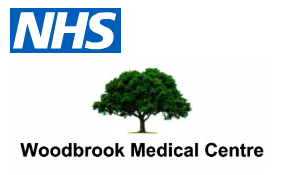| Version: | Review date: | Edited by: | Approved by: | Comments: |
| 1 | 13.02.2023 | Nikki Brockhurst | Nikki Brockhurst | 1 |
| 1.2 | August 2023 | Anne Jones | Anne Jones | Downloaded updated Policy |
| 1.3 | November 24 | Anne Jones | Anne Jones | Template 1.6 updated |
1 Introduction
1.1 Policy statement
The purpose of this document is to detail the procedures that Woodbrook Medical Centre has implemented to identify and record carers, ensuring they are appropriately referred for a carer’s assessment for further advice and support. It is the responsibility of all staff to give accurate, relevant information to those individuals identified as carers while also recognising and signposting those individuals who are providing a service but who are not registered as a carer.
1.2 Status
The organisation will aim to design and implement policies and procedures that meet the diverse needs of our service and workforce, ensuring that none are placed at a disadvantage over others, in accordance with the Equality Act 2010. Consideration has been given to the impact this policy might have regarding the individual protected characteristics of those to whom it applies.
This document and any procedures contained within it are non-contractual and may be modified or withdrawn at any time. For the avoidance of doubt, it does not form part of your contract of employment. Furthermore, this document applies to all employees of the organisation and other individuals performing functions in relation to the organisation such as agency workers, locums and contractors.
2 Policy
2.1 Who are carers?
CQC GP Mythbuster 44: Caring for carers explains that a carer is a person of any age (including children) who provides unpaid support to a partner, relative, friend or neighbour who could not cope without their help. This could be due to old age, frailty, disability, a serious health condition, mental ill health or substance misuse. Parents of children who are disabled or who have a serious health condition are also considered to be carers.
There is a difference between a carer and care professionals who are paid to provide care. Some carers receive statutory payments or a direct payment for their caring role. Even when carers do not receive such payments, they are still considered to be carers.
Many carers may not identify themselves as a carer. Instead, they see themselves as someone’s partner, relative or friend who is simply ‘doing their best’ to help someone they care about. For this reason, asking ‘do you look after someone?’ can be a more effective opening question than ‘are you a carer?’
2.2 Significance of identifying carers
This organisation will use the NHS England Carers toolkit which provides detailed guidance on how the organisation can identify and support the wellbeing of carers and their family. Furthermore, by effectively identifying and appropriately supporting carers, this organisation can make sure carers are able to lead a positive life outside their caring role.
2.3 Mechanisms for identifying carers
This organisation uses two methods to identify carers – self-identification and organisational identification. Self-identification is reliant on individuals informing staff that they are carers.
Organisational identification uses the following methods to raise awareness of the support available to individuals:
- Displaying posters in the waiting room and clinical areas
- Including a carer section on new patient registration forms
- Promoting carer information on the organisation website and other social media
- Generating carer-based discussions at Patient Participation Groups, including visits from local organisations
- Placing carer registration forms at reception (see Annex A)
- Holding carer campaigns and events using local media, social media and a range of other opportunities.
- When an individual is collecting a prescription on behalf of someone else
- During a discussion with a patient in consultation or other opportune times
All staff have a responsibility to try to identify, support and signpost carers.
2.4 Recording carer details
Staff are to ensure that carers are correctly coded on the clinical system using SNOMED CT code: Caregiver (person) SCTID: 133932002. Furthermore, individuals identified as carers will be added to the carers’ register and an alert added to the clinical system to ensure whole team awareness.
2.5 Support to carers
To ensure carers are identified and supported effectively, this organisation will adhere to the NHS England Supporting carers in general practice: a framework of quality markers.
2.6 Carers Champion
There is a nominated Carers Champion at this organisation and it is their responsibility to take the lead on all carer-related matters, providing advice and direction to staff and patients as required. Furthermore, they will gather evidence and complete the declaration at Appendix B of the framework of quality markers.
2.7 Additional resources for carers
Additional services and agencies to which carers can be signposted are:
Further support is also available from www.carersweek.org.
